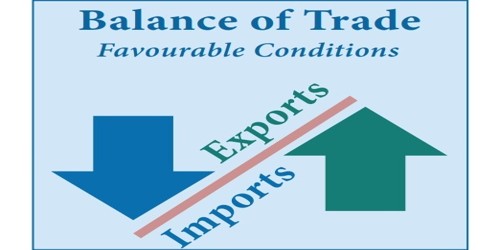
The Consumer Confidence Index (CCI) is a vital economic indicator that provides insights into consumer sentiment and its potential impact on the financial markets. Understanding the CCI can equip investors and traders with the knowledge necessary to anticipate market movements based on consumer behavior.
1. Introduction to Consumer Confidence
1.1 What is Consumer Confidence?
Consumer confidence refers to the degree of optimism that consumers have regarding their financial situation and the overall state of the economy. It is an essential economic indicator because it influences consumer behavior, particularly spending and saving habits. When confidence is high, consumers are more likely to spend money, which stimulates economic growth.
1.2 Importance of Consumer Confidence in the Economy
Consumer spending accounts for a significant portion of economic activity. Thus, fluctuations in consumer confidence can lead to varying economic outcomes. High consumer confidence usually correlates with increased spending, while low confidence can result in reduced expenditure, slowing economic growth.
2. Understanding the Consumer Confidence Index (CCI)

2.1 Definition and Purpose of the CCI
The Consumer Confidence Index is a statistical measure that gauges consumer sentiment about current and future economic conditions. The CCI is intended to provide insight into how confident consumers feel regarding their financial circumstances and the overall economy, which can help predict future consumer spending behavior.
2.2 History and Background of the CCI
The CCI was developed in 1967 by the Conference Board, a non-profit research organization. It has since become one of the most closely watched economic indicators, influencing policy decisions and market behavior. The index is updated monthly, with consumers surveyed about their perceptions of current business conditions and their outlook for the economy over the next six months.
2.3 How the CCI is Calculated
The CCI is derived from a representative sample of U.S. households. It consists of two main components that assess consumers' perceptions of current and future economic conditions. The index is calculated based on responses to survey questions that measure consumer sentiment, with the results normalized to create a baseline value of 100, reflecting a neutral level of confidence.
3. Components of the Consumer Confidence Index
3.1 Present Situation Index
The Present Situation Index measures consumers' perceptions of current economic conditions, focusing on business and labor market conditions. This component seeks to evaluate how households view their current financial situation, assessing both the prevailing unemployment rate and consumer spending patterns.
3.2 Expectations Index
The Expectations Index evaluates consumers' outlook for the future economic environment, covering expectations for income, employment, and overall business conditions over the next six months. Changes in this index can signal shifts in consumer sentiment and likely future spending patterns.
3.3 Additional Factors Influencing CCI
Several factors can influence the CCI, including changes in fiscal or monetary policies, fluctuations in the job market, geopolitical events, and changes in interest rates. Each of these factors can shape consumer perceptions and ultimately impact spending behavior.
4. The Relationship Between Consumer Confidence and Economic Performance

4.1 Consumer Spending and Economic Growth
Consumer spending drives economic growth, accounting for approximately 70% of the U.S. economy. When the CCI indicates high consumer confidence, it often correlates with increased consumer spending, stimulating economic growth and creating a positive feedback loop.
4.2 How CCI Reflects Changing Economic Conditions
The CCI serves as a leading economic indicator, often predicting future economic trends. A rising CCI suggests that consumers are optimistic about future conditions, leading to increased spending. Conversely, a declining CCI may foretell slowing economic activity.
4.3 The Connection Between CCI and GDP Growth
Empirical studies show a strong correlation between the CCI and GDP growth. A rising CCI often precedes higher GDP growth rates, while a falling index may signal potential contractions in economic performance. Investors can use CCI trends as part of their economic analysis when forecasting market conditions.
5. Analyzing CCI Data
5.1 How to Read CCI Reports
CCI reports usually include the current index value, changes from previous months, and breakdowns of the present situation and expectations indices. Analyzing these reports helps investors gauge changes in consumer sentiment and predict their potential impact on market movements.
5.2 Trends and Seasonal Adjustments
Understanding seasonal trends is essential when analyzing CCI data. The index may experience fluctuations based on specific times of the year, such as holidays or back-to-school seasons, affecting consumer sentiment and spending behavior.
5.3 Comparing CCI with Other Economic Indicators
Investors should consider the CCI alongside other economic indicators, such as the unemployment rate, inflation rate, and retail sales data. Doing so provides a comprehensive view of the economic environment and enhances predictive capabilities regarding market movements.
6. The Impact of CCI on Market Movements

6.1 Historical Correlations Between CCI and Stock Market Performance
Historically, stock market performance has demonstrated a strong correlation with CCI fluctuations. Periods of rising consumer confidence typically align with bull markets, while significant declines in the CCI may coincide with bear markets.
6.2 Immediate Market Reactions to CCI Changes
Market participants often react quickly to CCI reports. A significant increase in consumer confidence can lead to a surge in stock prices, while unexpected declines may trigger sell-offs in anticipation of reduced consumer spending and economic slowdown.
6.3 Long-Term Impacts of CCI Trends on Investing Strategies
Investors who monitor and analyze CCI trends can better position their portfolios for long-term gains. A consistent pattern of rising consumer confidence can signal favorable market conditions, while prolonged declines may prompt investors to reassess their strategies.
7. Strategies for Investors
7.1 Interpreting CCI Data for Investment Decisions
Successful investors incorporate CCI data into their decision-making processes. By assessing consumer sentiment, they can anticipate changes in market conditions and adjust their investment strategies accordingly.
7.2 Sector-Specific Investments Based on Consumer Confidence
Different sectors respond variably to changes in consumer confidence. Investors can consider focusing on sectors like consumer discretionary, which tend to perform well during periods of high confidence, while defensive sectors may be safer during downturns.
7.3 Risk Management Techniques in Relation to CCI Trends
Incorporating risk management strategies alongside CCI monitoring can help investors mitigate losses during periods of declining confidence. Techniques such as diversification, setting stop-loss orders, and avoiding overly aggressive positions can protect portfolios from market volatility.
8. Limitations of the Consumer Confidence Index
8.1 Factors That Can Distort CCI Data
Certain external factors can distort CCI data, leading to misinterpretations. Seasonal trends, economic anomalies, and survey timing can all affect consumer responses, creating misleading signals.
8.2 The Role of Other Economic Indicators
While the CCI is valuable, it should not be viewed in isolation. Integrating information from other economic indicators, such as inflation rates, employment figures, and interest rates, yields a more comprehensive perspective on the economic landscape.
8.3 Understanding the Context of CCI Measurements
Investors must consider the broader economic context when interpreting CCI measurements. Events such as political instability, natural disasters, or unexpected economic shifts can all impact consumer sentiment, influencing CCI values.
9. Conclusion
The Consumer Confidence Index serves as a crucial economic indicator that reflects consumer sentiment and predicts market movements. By understanding the CCI and its components, investors can gain insights into consumer behavior and its implications for economic growth.
Monitoring the CCI and interpreting its data can help investors develop strategies to navigate the complexities of the financial markets. From sector-specific investments to risk management techniques, leveraging consumer sentiment can enhance investment decision-making and improve portfolio performance.
In a constantly evolving economic landscape, staying informed about consumer confidence and its potential impact on market dynamics is essential for successful investing. By integrating CCI analysis into their broader economic assessments, investors can better position themselves to thrive amidst market fluctuations.
Related
-
Financial News

-
Cryptocurrency

-

-
Forex Market

-
Economic Indicators

-
Forex Market

